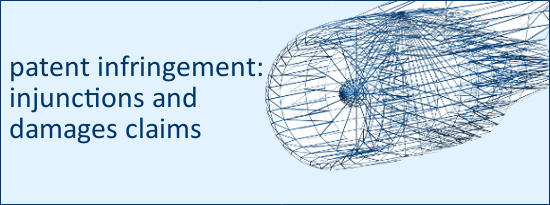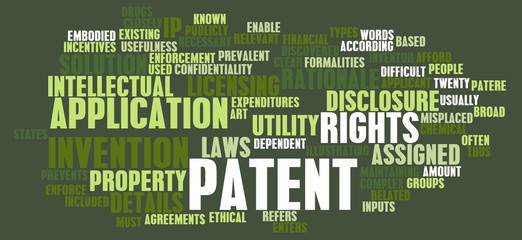
Patents: 20-year monopoly rights to inventions for:
- Reward for the inventor
- Encouragement to investment
- Dissemination of information through publication of the invention
UK patent law is set out in the Patents Act 1977 as amended (PA 1977).
The Act gives effect to the European Patent Convention 1973 (EPC) and Revised EPC 2000 and the Patent Co-operation Treaty 1970 (PCT). It also contains provisions that will give effect to the Community Patent Regulation, if and when that latter measure comes into force.
Obtaining UK patent protection
There are two types of UK patent:
- A national UK patent, examined and granted by the UK Intellectual Property Office www.ipo.gov.uk.
- A European Patent (UK), examined and granted by the European Patent Office (EPO), Munich, Germany, www.european-patent-office.org. These can be obtained by filing an application with the UK-IPO, the EPO or under the PCT.
A European Patent (EP) can be applied for in other EPC countries (presently 39 including extension States) in addition to the UK. The EP system is cost-effective over independent national filings where patents are sought in at least 3 European jurisdictions.
Once an EP is granted it becomes a bundle of national patents; in the case of an EP (UK) governed by the PA 1977. Revocation of an EP in one country does not affect the validity of the EP in the others. However, for 9 months after grant, an EP is subject to opposition in the EPO. A successful opposition means the EP is lost in all the designated countries.
The PCT is administered by WIPO in Geneva, www.wipo.org. An international application is made through a “receiving office” (the UK Intellectual Property Office is one, as is the EPO) listing the PCT countries in which protection is sought. WIPO does not itself substantively examine the application but communicates the application to the patent offices of the designated parties, which decide whether to grant patent protection according to local laws. Any resulting patent is a national patent. The PCT can be used for EP applications.
A UK resident must usually file an EP or PCT application through the UK Patent Office where the information relates to the military national security (s.23 PA 1977).
An invention is patentable if:
- the invention is new.
- it involves an inventive step.
- it is capable of industrial application.
- it is not excluded subject matter.
Making a product “patent” or patented”
There is no legal requirement for patented products to be marked. However, it is an offence to mark products as patented when no patent has been granted. If a patent application has been made the product can legitimately be marked “patent pending”.
Marking a product serves as a warning to potential infringers. Provided the patent number accompanies the marking it can avoid an innocence defence to damages for infringement (s. 62 PA 1977).
Community Patent
A Commission proposal for a Community patent has been in existence since 1973 but delayed by disagreements between Member States over languages and jurisdictional issues (now, it seems, largely resolved). Under the latest proposal an applicant would apply for an EP designating the Community as a single territory. The resulting EP granted by the EPO would have unitary effect throughout the EU. The Commission has also proposed a unified patent litigation system, which would deal with infringement and invalidity proceedings of both European and future Community patents. The new unified court structure would comprise a largely decentralised court of first instance (with local and regional divisions), a single court of appeal and a role of the ECJ aimed at providing a consistent interpretation and application of Community law.
Patent infringement & revocation
The first question is whether the invention is a product or a process. This is determined from the wording of the patent claims.
An invention for a product is infringed by making, disposing of, offering to dispose of, using, importing, or keeping for disposal or otherwise a product falling within the claims of the patent (s. 60(1)(a) PA 1977).
An invention for a process is infringed by using the process or knowingly offering it for use, and disposing of, offering to dispose of, using, importing or keeping for disposal or otherwise a product obtained directly from the patented process (s. 60(1)(b) and (c) PA 1977).
Contributory infringement is committed where the defendant supplies or offers to supply the essential elements of a patented invention provided the defendant knows or it is obvious that the purpose of the supply is to infringe the patent (s. 60(2) PA 1977).
A defendant may not replicate exactly what is claimed as the invention. The court must construe the claims in the light of the description and drawings in the patent to see whether the alleged infringement falls within the scope of the claims (Kirin Amgen(2004)).
The Protocol to art. 69 EPC instructs its member courts to achieve a balance between fair protection for the patentee and certainty for third parties.
Defences to infringement include private and non-commercial use, experimental use and prior use.
Remedies for patent infringement include interim and final injunctions, damages or an account of profits, delivery up and destruction of infringing products and a declaration that the patent is valid.
An action for patent infringement can only be started once the patent is granted but damages may be recoverable for infringements occurring in between publication of the application and grant. Infringement proceedings may be brought by the proprietor of the patent or an exclusive licensee.
Groundless threats of patent infringement proceedings are actionable by the defendant (s. 70 PA 1977).
Revocation of UK patent
A defendant to a patent infringement action will normally argue by way of counterclaim that a patent is invalid. Alternatively an application to revoke a patent can be made to the comptroller or the court. Revocation can only be ordered on the grounds that (s. 72 PA 1977):
- The invention is not a patentable invention.
- The patent was granted to the wrong person. The ground is only available to a person who establishes entitlement and within two years from grant.
- The patent does not disclose the invention sufficiently clearly for it to be carried out. Insufficiency covers not only failure to teach the skilled person how to perform the invention but also claiming a broader monopoly than is justified by the inventive concept of the invention – Biogen v. Medeva (1997).
- The patent has been wrongfully amended either before or after grant so as to add matter.
Intellectual property at a glance
- Patents, trade marks, copyright, designs and trade secrets in their national, EU and international contexts.
- Trade marks principally indicate the origin of goods or services. They can be protected in the UK through either passing off or registration. The choices for registration are a UK or a Community trade mark or international registration.
- A registered trade mark may afford protection against use of the same or a similar sign for the same, similar or dissimilar goods or services.
- Patents confer monopoly rights in inventions. The invention must be new, inventive, capable of industrial application and not excluded.
- Patents must be licensed in accordance with the Block Exemption on Technology Transfer Agreements. They may be subject to compulsory licences and Crown use.
- Copyright subsists in works not ideas. Related rights include moral rights and rights in performances.
- Copyright is infringed by taking a substantial part of the claimant’s work. Additional damages are available for flagrant infringements.
- Database right subsists in electronic and paper databases if a substantial investment is made in obtaining the contents.
- Designs are protected in UK law by registered and unregistered design rights. Community designs co-exist with UK designs laws.
- Trade secrets may be protected by a civil law action for breach of confidence. The information must be confidential, imparted in circumstances importing a duty of confidence and the defendant must make unauthorised use of the information.
- Intellectual property rights are generally litigated in the High Court. A general pre-action protocol sets out the steps that parties should follow when considering litigation.
Expert evidence can be the key to success in intellectual property cases.





